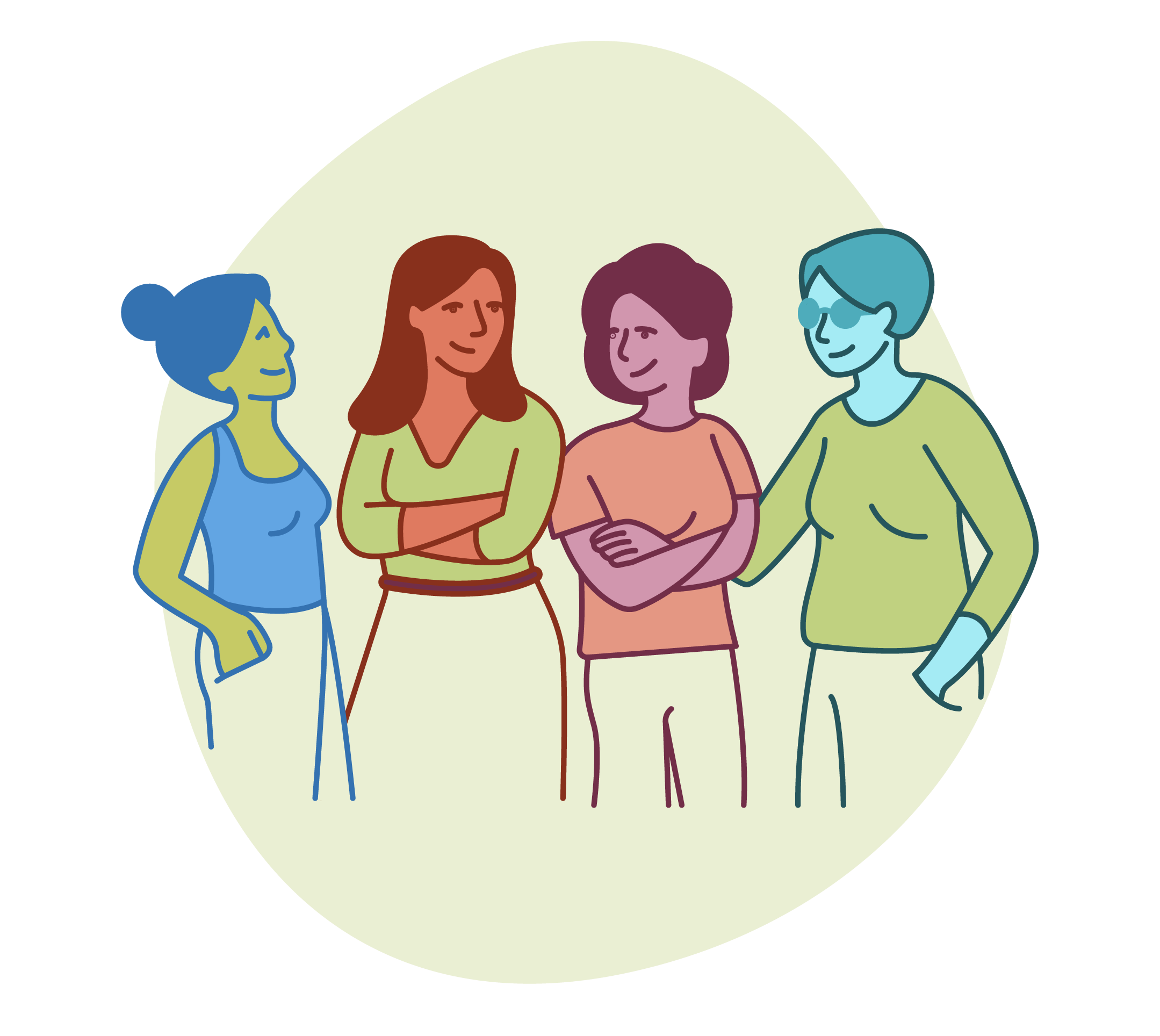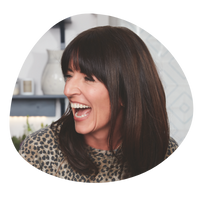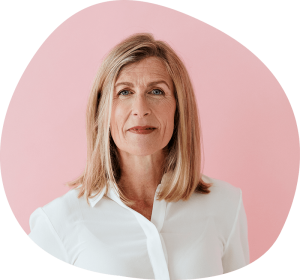
Join 1,000s of women in our pause. community
Get valuable information and support from our community and team of menopause specialists. Subscribe for the latest evidence-based information, free events, helpful articles and inspiring women’s stories.
Downloaded from www.mymenopausecentre.com
Direct URL: https://www.mymenopausecentre.com/blog/davina-mccalls-secrets-for-fabulous-midlife-hair/
“Good hair, for me, is a real confidence boost. Like putting on a bit of lippy, if my hair looks good then I feel good and just on it. I first started going grey when I was twenty-five and I’ve been dyeing it ever since (actually, I have been colouring my own hair since I was eighteen, but this was just in order to get rid of my pesky greys). I know loads of women look incredibly chic with grey hair but I’m just not quite ready to embrace the greys. I will occasionally have my hair coloured on a shoot, but it does surprise people that I really do colour my hair myself at home. It’s just more convenient for me than sitting at the hairdresser for three hours. I can whack it on, chat to the kids or get a bit of work done while waiting for the colour to work its magic. When I hit perimenopause and pre-HRT, my hair felt a bit flat, dry and meh. I know now that my hair was crying out for hormones. Michael Douglas is a session hairdresser who has been in the business for over thirty years. What he doesn’t know about hair isn’t worth knowing. He’s worked with all the huge brands, he’s worked in advertising, commercials, films, and TV shows. He’s done many celebrities’ hair and has been my hairdresser for over twenty years. He does these hair clinics on his Instagram page, which are Instagram lives, where he invites women and men to come on and he solves their hair problems – including many menopausal women."

The natural ageing process
As we get older, our cell production slows down and our cells are reproduced from their previous version. I read a brilliant analogy in a scientific paper that explains this: it’s a bit like when you make a photocopy. The first time you photocopy an image it’s crisp and clear, but when you photocopy a photocopy again and again it’s not the same. And that’s essentially how our cells age.
In addition, the quality and amount of hair you have deteriorates as the follicle (which anchors each hair into the skin) starts to get older. It stops producing colour, so you can get more greys and the hair itself becomes thinner.
Hormones
Hormones play an enormous role in the health of our hair throughout our lives. To break it down into really simple terms, our hair goes through a growing phase and a shedding phase. Our hair is in the growing phase about ninety per cent of the time and the rest in the shedding phase – this is when you might run your fingers through your hair and a few strands come loose, or you maybe notice hair collecting in the bottom of the shower.
But the fall in oestrogen during perimenopause and menopause can throw this all off balance. That drop in oestrogen slows down that growing phase from ninety per cent to sixty per cent and ramps up the shedding phase so you get more hair loss and less hair growth.
With oestrogen in retreat, it means androgens that are usually suppressed become more prominent, and one of the first things they will do is shrink the hair follicles. Your hair will grow, but it will be much finer.
Your genes
Female pattern baldness, where the crown area is usually affected, is a hereditary condition in which the growing phase is shorter. It can happen at any age, but is most common after menopause, when the hormone changes also affect the length of the growing phase.
Diet
The slowing down of the growing phase is largely related to hormones, but it’s also connected to health and diet. Your hair is pretty low down the priority list when it comes to getting all the vitamins and nutrients from your diet. Your muscles, bones, teeth, eyes and skin get first dibs, so if you aren’t eating a balanced diet, then your hair won’t get what it needs.
If you’re in menopause, going through a shedding phase and your diet isn’t great then, blimey, your hair is going to be suffering – and it will show. Here are some options on how to get your hair back to its best.
See a doctor about your hormones
Putting the oestrogen back will help to re-establish the growing and shedding phase. You need to stick with it, though, as you won’t see a massive improvement in your hair overnight. Hair grows on average a centimetre each month, so you need to be patient and give it at least 4–6 months before you see the real effects of HRT.
Don’t ever underestimate the power of a healthy diet
We are so bloody busy fitting everything in that we often forget to re-fuel and eat properly. Our hair type is in the genes, so you can’t make fine hair grow back thicker, or curly hair grow straight, but protein is a wonderful way to make your hair grow back better. You need about 55–60g of protein in your diet a day to help grow healthy new hair. Collagensupplementscontainingamino acids (a type of protein) are great for hair, nails and skin. Vitamin D also helps to keep the hair in the growing phase, so make sure you are getting your daily amount. Iron also helps to keep the hair in the growing phase.
Give your hair some quick oomph
A couple of clip-in hair extensions can really help create the appearance of thicker, fuller hair.Root touch-up sprays are good to put on any patchy areas as a tiny bit of powdered colour.
Look after your scalp
The scalp is super-important – it’s the fertile seed bed to grow a good head of hair. If you are suffering from hair loss you could try using a scalp dermabrasion treatment, which cleans the scalp and helps to prepare the follicles to grow hair. Be sure to go to a specialist for this.
If you have female pattern hair loss, then at-home treatments with the ingredient minoxidil can help to re-awaken the hair follicles that have already died. You massage it into the scalp every day and it can yield some great results. Again, it won’t make thin hair thicker, because that’s down to your genes.
Give your hair some TLC
If you blow-dry, curl or straighten your hair regularly, then you need to be using products such as hair protection cream or blow-dry spray on wet hair before you get to work.
Less is more when it comes to straightening; people use irons way too much, dragging them through the same section three or four times. It’s better to do it once, slowly, with some product on to protect the hair.
While you’re at it, have a look at the brushes you are using. Brushes have a shelf life, so if they are looking a bit tired and broken, replace them.
Don’t let your age define your ‘do’
I really don’t buy into the idea that your hair needs to look a certain way once you reach a certain age. You are never too old for the style you want. What you want is the best possible version of you.
Extracted from Menopausing by Davina McCall, published by HQ.
Photo: Mark Hayman

Whether you want to discuss your symptoms, create a treatment plan that's right for you, understand some test results or have a check-up, the highly experienced doctors and nurses in our menopause clinic are here to help you.
Book now
We’d love to hear from you
Please ensure you’re logged in to leave a comment. Not got an account – registration is quick and easy! All comments are moderated prior to being posted on the website and are subject to our Acceptable Use Policy.
Comments